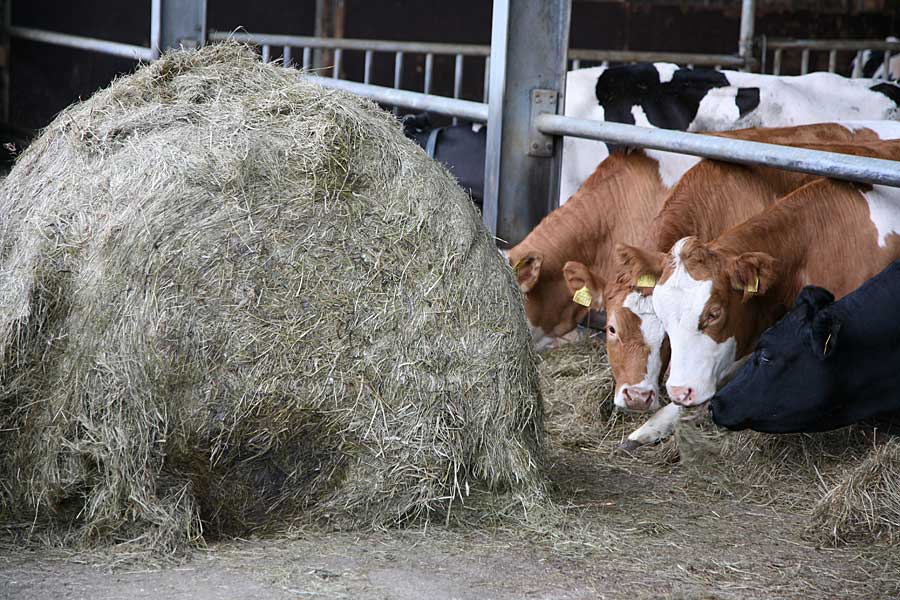Silage For Dairy Cows & Cattle
Silage for dairy cows and cattle
In the feeding of dairy cows and cattle, silage is an indispensable part of the forage ration. While maize silage is predominantly stored in clamps a lot of grass silage goes into bales. Especially for small farms or farms with small plots of land the making of bale silage is an alternative.

High quality forage is the basis of feeding high yielding dairy cows. There is no room left for any compromise in forage quality. Making high-quality baleage meets the requirements of high yielding dairy cows as well as best silage made in conventional clamps. The goal of producing silage for cattle and cows is to deliver high-energy forage with a lot of nutrients and a sufficient content of fibre. Besides we want the forage to be free from undesired microbes like mould, yeasts or clostrides which might affect the health of the livestock.
In order to achieve the highest energy content in the forage, it is recommended to cut the grass when the dominant grass species emerge ears. The values of protein and energy of the forage are considered to be at the optimum at this stage of maturity. A delayed cut means a lower content of sugar respectively energy which makes the material more and more difficult to ferment. Per kilogramm of DM you must calculate a loss of energy of approx. 0,1 MJ NEL per day.
The small units of silage in the bales simplify the separation of different feed qualities according to the requirements. Top-quality silage can be exclusively reserved für high yielding cows, while the lower qualities from the second or third cut can be put aside for feeding growing calves or other groups of cattle. The bales can simply be marked with waterproof felt tips to sort them by quality.
In order to produce only high-quality silage two things must be necessarily avoided: butyric fermentation and heating up. Butyric fermentation occurs especially under wet harvesting conditions when soil contaminations get into the forage. In these contaminations we often find clostridia, which grow and multiply rapidly in grass with low dry matter content. In the worst case they get the upper hand over lactic bacteria and spoil the silage. Silage with a lot of butyric acid has not the desired amount of energy and can affect the healt of the cattle with the metabolic products of the clostrides.
Heating up on the other hand is caused by the activity of moulds and yeasts. When feeding out the bale silage, you often see mouldy spots or layers in different colours, mostly white, grey, blue or red. The temperature of the silage rises and – of course – energy gets lost. Moreover some varieties of mould can seriously affect the health and performance of the cattle by producing mycotoxines. Especially in the warmer months of the year problems with secondary fermentation can arise quickly. So the bales should be consumed by the cattle within a few days only. To prevent the forage from heating up, the grass stand should be cut in time and should not dry too long. The higher the DM rises, the more difficult it becomes to press the bales tightly and to achieve a silage with sufficient aerobic stability.
So, how does a high-quality baleage for (high-yielding) dairy cows looks like?- high content of energy – preferably more than 7,0 MJ NEL per kilogramm of Dry Matter
- high palatibility for high feed intake
- DM of 30-40%
- sufficient content of fibre to stimulate ruminal activity
- sufficient content of protein and vitamins
- low ph of approx. 4,0
- do not excessive wilt the forage, max. 40% DM are recommended
- chop the forage at a lenght of 6-8 cm
- avoid silage-making in the wet in order to prevent soil contamination
- press the bales tightly to expell the air and avoid the forming of air pockets
- wrap the bales with 8 or more layers of film wrap to ensure airtight storage
- use silage additives to safeguard silage quality